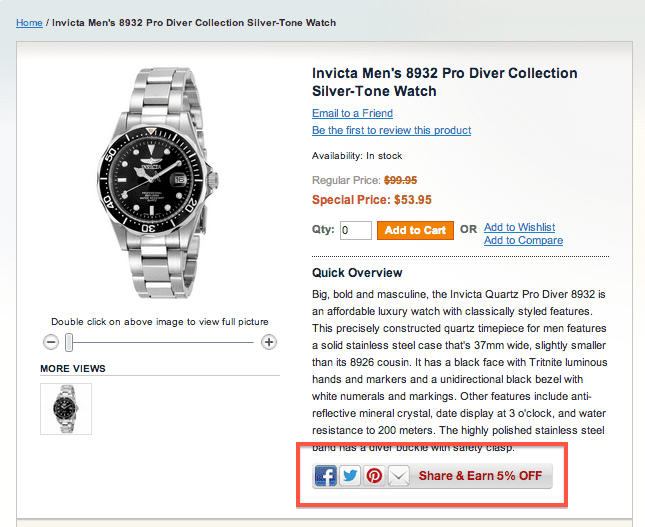Want More High-Powered Sales? Use These Social Strategies for Ecommerce

Marketers used to think social media was only necessary if the target audience was teens and young adults, but surveys show time after time that every age set uses the platforms. Entertainment and communication are the obvious reasons, but, as online retailers have found out, the channels are also powerful tools for ecommerce.
Today, there are 3.1 billion social media users, almost half of the total global population. Some platforms, like Instagram, are seeing massive growth and has been seeing a year-over-year increase of no less than 100 million (in terms of monthly active users). Others, like Facebook and Snapchat, are less stable due to problematic ads or privacy scandals.
Social media has undergone dozens of changes, but the ones that have greatly benefitted e-tailers are the changes that have more directly integrated social media with ecommerce. Online shoppers are spending billions through social channels (the top 500 online retailers earned $6.5 billion from social commerce in 2017), and social commerce has never been easier or more lucrative.
Now is the time to start using social media for your online store if you’re not already. And if you’re looking to boost your sales, read on for the best social strategies for ecommerce.
Reach and Engage Billions of Consumers
With billions of consumers spending their free time on social media (with the average user spending at least 30 minutes per day on these sites), the platforms are an effective place to reach them. It’s an opportunity to put the “social” in social media by engaging consumers and asking questions, responding to messages or even using their content—if they have approved its use.
Home share and travel brand Airbnb, for example, gathers its social content from users who tagged the account in posts. These content creators then gave Airbnb permission to use their images. To complete the cycle, Instagram users can book a stay at the homes pictured all without leaving the app. PWC found social networks are the biggest source of inspiration for consumer purchases with 37% of consumers finding purchase inspiration through the channels, and Airbnb has perfected this vacation “inspo” feed.

Even if your brand is not so glamorous, brands that engage with customers via social media gain 20-40% more revenue per customer relative to companies that do not. A little recognition and acknowledgement go a long way when it comes to effective social strategies for ecommerce.

Stay Front-of-Mind with Pixel Retargeting
It’s rare for consumers to make a purchase the first time they visit a site or see an ad, but you’re leaving money on the table if you don’t try to re-engage them. In fact, it takes anywhere from six to eight touch-points to create a legitimate sales lead.
You’ve probably noticed as a consumer that the process looks something like this: You visit a site, leave it, and then you see advertisements from that same site for the next few days while browsing on the Internet, the result of an effective social and web retargeting strategy in play. It seems creepy, but it’s effective. Studies show that conversion rates increase with more ad impressions, and this is a surefire way to get them.
Marketers call this retargeting, which is simply showing advertisements to consumers who have already shown an interest in a brand or product. The easiest way to retarget is to let a tool like the Facebook Pixel do it for you. By using machine learning, the pixel optimizes ad audiences, and serves ads to those who are most likely to convert. Another great tool for website retargeting is Ad Roll, which also uses a pixel to serve ads to user who bounce away from your website without converting.
Spanish brand Brava Fabrics is one that used the Facebook pixel to show a carousel ad to consumers who had either visited their site or engaged with a previous ad. It was created using Facebook pixel data and had a 30 percent higher ROI than previous ads, helping us better gauge the efficiency of this social strategy for ecommerce.

Facebook isn’t the only social network using a pixel, but it might be the most impactful tool because Facebook continues to be the most popular social networking site, in terms of number of active users. As of October 2018, it had a little over 2 billion active users.
Show Social Proof
For online shoppers, product reviews are everything. Consumers use reviews to make purchasing decisions, develop trust for a product or brand and recommend businesses.
Social proof is one of the most important factors when buying a product that you can’t see or feel. In fact, 92 percent of consumers are more likely to trust recommendations from individuals they don’t personally know over brand recommendations.
Nature Valley, the snack company best known for its crunchy granola bars, proudly displays its reviews (now called Recommendations) on its Facebook page. This is also a way to engage the customer by adding a comment to reply, as Nature Valley did here.

Allow Product Sharing on Social
Think of your social media news feeds. Between all the platforms, there are retweets, shared posts in Stories, reblogs and shared posts in feeds. It’s evident that sharing is a vital part of social media, so e-tailers should take advantage by adding social sharing capabilities on their product pages.
By encouraging shoppers to share their great finds, your store will be exposed to a new audience. One way to look at it is that this is just free marketing. But, it’s also easy social proof, which we’ve already mentioned is a key piece of the interconnected ecommerce puzzle.

Make Your Feed Shoppable
The human brain processes and retains images better than any other type of information, which is one reason for the explosive growth of visual-oriented platforms like Pinterest and Instagram. This and the fact that social channels have recently added the ability to purchase directly within their apps, and you can see how powerful social media is for ecommerce.
Selling your products on Pinterest, Instagram and Facebook is as simple as switching to business accounts and making your posts “shoppable.” Pinterest and Facebook are easy to do this on because each listing can include a direct link, but Instagram only allows one link in the account’s profile. This means businesses must use a third-party tool like Like2Buy, which creates a landing page identical to the Instagram feed, and allows each image to direct link to its product page.
Nordstrom uses Like2Buy to replicate its feed on a shoppable platform, so consumers don’t have to sacrifice the convenience of purchasing without leaving Instagram.

Shoppable social media profiles have proven to be valuable. Each pin you put up on Pinterest will generate an average of $0.78 in sales, and the average order value of Pinterest users is $123.50. And even though the AOV on Instagram is only $65, 72% of users say they have bought a product they saw on Instagram.
Leverage Live Video
An often-underused feature across social media is live video, which means it’s a niche your online store can fill. Like the ephemeral content of Snapchat or Instagram Stories, live video promotes a sense of urgency and fear of missing out.
Here are some statistics about live video’s popularity:
- Users watch live videos on Facebook three times longer than pre-recorded videos and live videos get ten times more engagement in the comments section.
- 80% of people prefer watching a live video rather than reading a blog post, and 82% of people would choose live video over any other type of social post
- People in nearly every age category, from teenagers to those 55 and older, create and watch live video. Overall, 36% of Americans watch it, and 22% create it.
- More than 36% of Internet users have watched a live video.
- me is less than two years old, but it already has more than 20 million active users. These avid users create more than 200,000 hours of original content each day.
Buzzfeed is a brand that’s harnessed the power of live video, and one of its most famous stunts has over 11 million views to date. In the days leading up to the live stream, Buzzfeed encouraged followers to tune-in while they tested how many rubber bands it would take to put enough pressure on a watermelon for it to explode.

Buzzfeed has always been a playful brand, but live video doesn’t have to be reserved for crazy experiments. You can use live video to showcase a product launch or test, a new line (apparel or beauty) reveal or a trade show exhibit and more.
Build Influencer Relationships
Like social proof, influencer approval is important to consumers when searching for product recommendations. The industry is growing exponentially and remains one of the most effective for marketers because influencers are the new celebrities, especially with Gen Z.
Look at these influencer marketing statistics for 2019:
- Influencer marketing yields an average return of around $7.65 for every $1 you spend.
- 84% of polled marketers describe it as an “effective” strategy.
- 67% found it so effective that they plan to increase their budget for it.
- Influencers created 86% of the most-watched beauty videos on YouTube. This means that the actual beauty brands themselves only created 14% of them!
- 70% of teenage YouTube users trust influencers more than traditional celebrities.
- On Twitter, there’s a 2x increase in purchase intent when consumers see tweets from both brands and influencers.
- Around half of Twitter users (49%) say they rely on recommendations from influencers, and 40% have made a purchase solely based on a tweet from an influencer.
Influencers can range from mega-famous, such as anyone in the Jenner-Kardashian family, to micro-influencers with small but highly engaged followings. Regardless of their level of fame, they should be screened by e-tailers looking to build mutually beneficial relationships.
Currently, GlassesUSA is partnering with former Disney Channel star Hillary Duff to promote a new line of eyeglasses and is utilizing Twitter for the campaign.

Don’t Be Afraid of Trial-and-Error
Businesses just starting out on social media are always relieved to learn that advertising costs are so low. For as little as a few dollars per day, your online store can run ads on social media channels, so you can gather important data for future trials. The low risk and low cost are helpful for beginners, who can and should then move into A/B testing.
Also called split testing, this is the process of running two versions of an ad to see which performs better. By slowly working through the ad’s variables, you can fully optimize your advertisement for high conversion rate.
For YuppieChef, a recent ad tested the importance of site navigation. The brand was surprised to find that a navigation bar, thought to be vitally important, only distracted consumers and did not result in as many clicks.
It’s important to test everything from ad copy to color schemes to call-to-action text because as many brands discover, its audience may have different preferences than originally thought.
Have Fun with Informal Content
Of any public-facing channel, social media is the place to be informal and show consumers the human element of your business. The platforms are laid back and have (almost) no rules, so it’s a chance to have fun and entertain your followers, which then builds trust through relatability.
Wendy’s is one brand that has exploded on Twitter thanks to its humorous voice that shines in Tweets and interactions with consumers and other brands. Many food and beverage accounts have taken note and have relaxed their tones, much to the delight of their fan bases.

Twitter isn’t the only place for businesses to let their hair down. Facebook, Instagram and Snapchat all offer opportunities to be human, whether in behind-the-scenes videos or industry memes. Just keep in mind, you might want to remain totally professional on LinkedIn.
Improve Customer Service
Social media has added a convenience factor to ecommerce, and it’s especially true for customer service inquiries. The days of calling a toll-free number, waiting on the line for hours at a time and being at your wit’s end by the time you can speak with someone are behind us. Now, consumers can—and prefer to—message a brand directly through social media.
78% of customers believe that social media is the future of customer service, and it looks to be going that way. For 45% of consumers, social media is one of the first channels they go to in case they have any questions or issues.

Beauty powerhouse Glossier certainly makes use of its social media channels to communicate with consumers. Whether responding to comments or direct messages, the brand never leaves anyone hanging.

The power of social media is undeniable, and it facilitates a better experience for shoppers and sellers alike. Start with these tips to optimize your ecommerce social media strategies and watch 2019 be your best sales year yet.
Share On:







